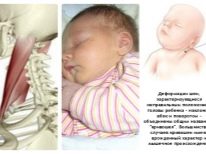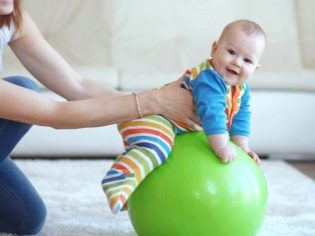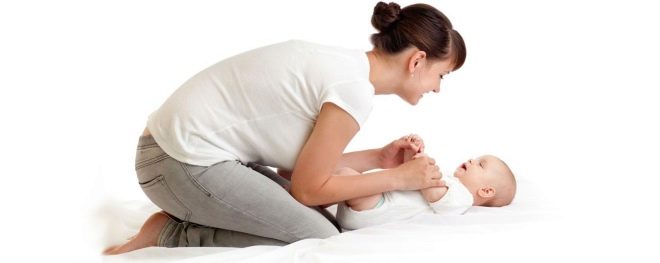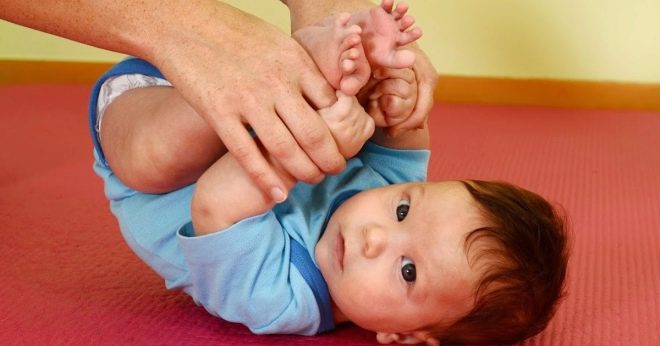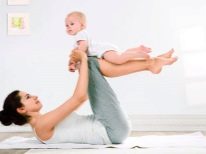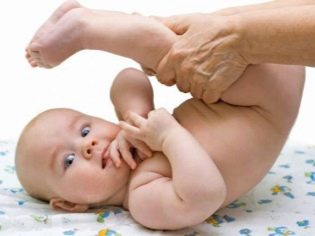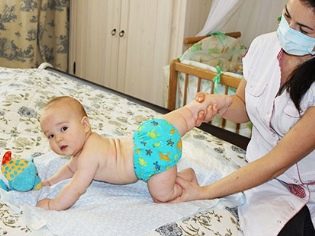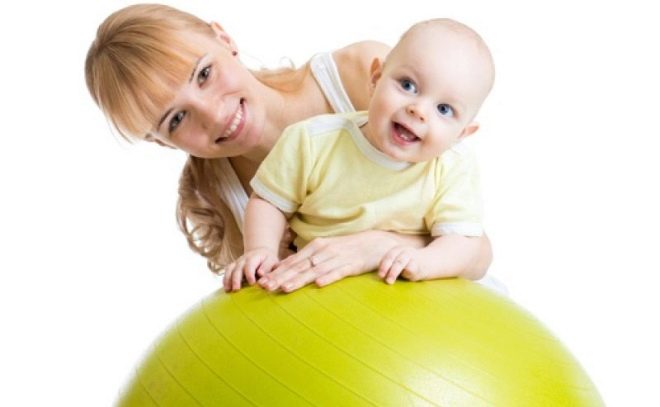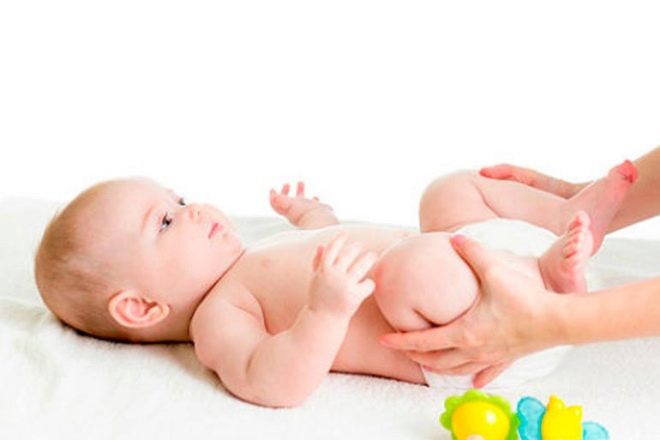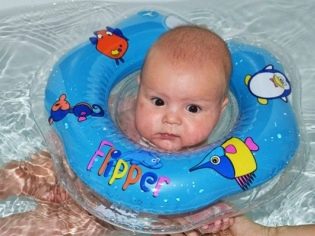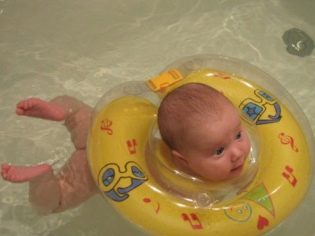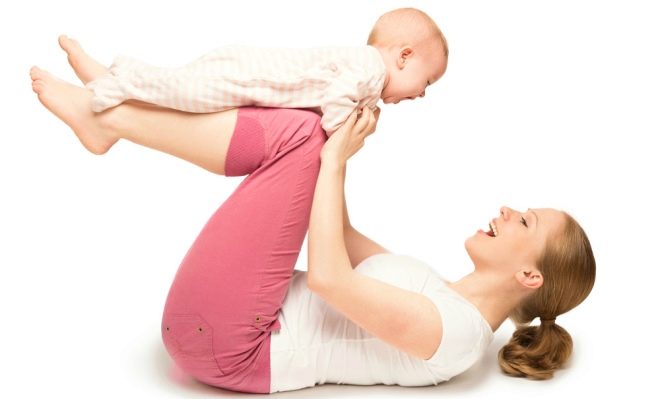Gymnastics for babies: fun and effective exercises
Gymnastics for babies - a great way to strengthen the immune system, to develop the muscular and bone apparatus of the child, to save him from hypertonia. In addition to the obvious medical benefits, home exercises for the crumbs literally from the first days become an important link with the mother - during the exercise, communication and tactile contact take place. It helps to develop the emotional sphere of babies, speech recognition centers, prerequisites for future speaking.
If parents can make daily gymnastics for an infant interesting and informative, it will be a great pleasure to do it. In this article we will tell you how to hold a gymnastics not only healthy, but also fun, which your child will definitely like.
Benefits and goals
Much has been said and much written about the benefits of gymnastics for a person. But not everyone knows that for a baby a set of physical exercises is more than just a load on muscles and joints. Since babies of infancy can not do the exercises on their own, charging always goes along with mom or dad. Crumbs are important to feel the closeness of the mother, through her he learned the world during the nine months of pregnancy, and she in the first months of his independent life is his main vehicle in this world. Thus, charging enriches the inner world of the baby, gives him much-needed communication with his mother.
Gymnastics is a great addition to the massage. In combination, both types of effects help in the correction of muscle hypertonia, which is characteristic of all newborns and infants for at least six months. Gymnastics is recommended for the proper development of the hip joint with dysplasia. Also, thanks to gymnastics manages to fix torticollis.
Therapeutic gymnastics in a complex with massage is prescribed to a child in the presence of a hollow and funnel-shaped chest, with hypotonia, with valgus and varus deformities of the legs.
For hyperactive and easily excitable children to strengthen the nervous system, relaxing exercises and relaxation massage are recommended. Sluggish and apathetic kids, on the contrary, are recommended tonic, fortifying gymnastics.
In case of revealed pathologies, the massage is prescribed as a treatment, and the corresponding gymnastics is from the complex of exercise therapy. Children healthy gymnastics and general massage are recommended for the prevention of pathologies, for better physical and mental development.
On the Internet, interested parents can find a large number of different exercises for children up to one year old, but there are not so many really exciting ones, and the game component is the most important. If to force the kid to do something every day that he has long been bored with, there will be little benefit from such gymnastics. Therefore, we decided to collect only the best exercises that will not let the baby get bored and bring a lot of benefits to his health.
rules
Fun gymnastics for babies can be conducted from the first days of life. There is no age limit. But parents should be well aware that physical activity should be commensurate with age, it is impossible to overload the baby. Conduct classes daily, you can do gymnastics 2 or 3 times a day, but the duration of each lesson should not exceed 5-10 minutes.Gradually, the mother can increase the time of classes and by 8-9 months the duration of gymnastic classes can be as early as 20 minutes, and closer to a year, already half an hour.
A few simple rules will help you organize your baby’s activities correctly.
- Try to conduct classes at the same time. It is best to do it in the morning and after midday sleep, but here in the evening, when you do a light and relaxing massage to the baby before bathing and going to bed, it is better to give up gymnastics exercises so as not to stimulate the nervous system. Over-stimulation will prevent the baby from falling asleep fast and hard.
- Before gymnastics always do a light general or therapeutic massage, prescribed by a doctor on the occasion of a specific disease.
By the beginning of the exercise, the muscles of the baby should be “heated” and prepared. This will help avoid pain, stretching.
- The room in which the lesson is held must be aired, it should not be too cold or too hot. It is best to maintain the temperature at 21 degrees of heat. If it's summer and there is an opportunity, do gymnastics outside.
- Do not load the baby immediately after eating, it is also undesirable to begin to engage in an empty stomach. The best time to charge is the interval between feedings (one and a half hours after meals).
- Do not exercise on a soft bed. The spine of the baby will not be on it in the correct position. For newborns and infants for up to six months, use the changing table, do the exercises on a regular table.
For more mobile and active kids, after half a year, the surface of the floor is more suitable, on which you lay a pad of polyurethane foam that does not let in the cold.
- Always start charging in a good mood. The children feel the state of their mother delicately, and if she is in a bad mood, they too will act up.
- Make a variety of exercises that you have chosen as the main one. Gradually begin to carry out individual exercises in the bathroom, practice swimming, add to the usual exercises classes on the gym ball - fitball.
- The best gymnastic lesson is a joint exercise of the mother and the baby. This is especially true when children begin to imitate adults, that is, after 9-10 months.
Never force a child to engage against his will. If he didn’t sleep for some reason, he has a bad mood (yes, infants have a bad mood too!), Something bothers him, it is better to postpone his exercises until the child is completely healthy, cheerful, cheerful and in tune on communication.
Contraindications
By itself, gymnastics for infants does not have so many contraindications, but before you start, mother should consult with a pediatrician. Pediatric doctors usually give permission willingly. And if a child has particular features of development, then it is the doctor who will tell you how to do gymnastics in your particular case. For example, with DTS (hip dysplasia), gymnastics can be performed directly with orthopedic "struts" between the legs, but here it is necessary to see how the specialist does it.
With the deformation of the chest, they increase the number of exercises aimed at stretching the pectoral muscles, and therefore fitball exercises will be useful.
With leg deformities, exercises for feet, knees and hips are the basis of gymnastics, and with knee bones, there are completely specific therapeutic exercises for strengthening the muscles of the neck.
To contraindications include the state of fever - with a high temperature occupations can harm. Do not do gymnastics and when the baby suffers from colic, cutting teeth and other ailments.
With great care and only with the permission of a doctor, gymnastics is carried out for children with congenital heart defects, vascular diseases, hydrocephalus, large hernias, as well as paralysis and paresis of different origin.
For a healthy child, exercises are allowed and permissible, both static and passive, that a mother spends to a crumble, which lies, and active, in which the child takes direct and volitional participation due to her age-related skills.
Entertaining movements
Of the variety of exercises for infants, we selected only those that can rightly be considered fun and effective. All of them are “tested” by more than one generation of karapuz and are usually very popular with children and their parents. From this list, each mother will be able to draw up a program of classes for her baby according to his age. Gradually, the program can be complicated by repeating the past and adding new exercises.
Newborns
A distinctive feature of gymnastics for the youngest is gentle and gentle touches, lack of pressure on the muscles during massage and exercise. Children sleep a lot, stay awake a little, and therefore one short session after morning hygiene procedures will be quite enough.
"Frog". Lay the baby on the back. Take him by the legs in the lower leg, the palm of his mother close the knees of the child. Then do a few flexion movements, as if the crumb squat, and then spread the legs to the sides with their knees out - so the crumb will assume the “frog” position. Turn the baby on the tummy. Grasp his feet and press down slightly, legs should also be spread to the “frog” position.
- "The guard". Put the baby on the belly. Stand in the back and lightly take the crumb by the shoulders. You need quite a bit to support the baby by the shoulders so that he will hold onto his elbows for a few seconds. Then slightly spread the shoulders to the sides - the baby will reflexively try to lift the head upwards. This exercise will help prepare the neck muscles for self-retention of the head.
- "Bicycle". This exercise is especially liked by babies. In the supine position, take the legs and alternately bring them to the tummy. This effect strengthens the abdominal muscles, reduces the occurrence of colic. If the mother will accompany the movement with ridiculous rituals, the baby will get more pleasure and benefit. An example of the tips for this exercise: “We are going, going, twisting, twisting, and getting tired - let's rest, find out everything, see everything, let's go around the world! ".
Children from 2 to 4 months
For children aged 2-4 months, be sure to add exercises that promote crawling. To do this, you can complicate the already familiar "Frog" by pressing on the foot progressively, so that the baby makes a reflex movement forward on the stomach. Children become more emotional, and therefore do not skimp on poems and rhymes, sing songs during class.
"Umbrellas". Put the child on the back, grab his hands with his fingers, pull the handles forward and rotate the brushes in a circle, shake them and start rotating in the other direction. You can read the kid a litter piece: “The umbrella is spinning in my hands, the rain is slumbering in the clouds, I twist it right and left, I fly to visit the rain!”.
- "Dance". This exercise helps to strengthen the muscles of the legs and is usually very popular with kids. Put the baby on his back, take his right leg with his hand and touch it with the heel of his left knee, then repeat the exercise with the opposite leg.
- "Frog in swimming." This exercise is performed in water - a large bath or pool. For him you will need an orthopedic circle around his neck for bathing infants. Release the child with the circle in the water. With your hands, take hold of the baby's legs and bring them down as in the “land” version - first to the stomach, then with breeding to the side. Add a series of turns with a circle in the water - from the back to the stomach and back.
Toddlers from 5 to 7 months
At this age, kids can do a lot, be sure to use this to complicate gymnastics. The tasks become more difficult, but more interesting, and the kids more emotionally begin to react to them.
"Airplane". The favorite exercise of many generations. You can perform it on my mother's or father's hands.The child is wrapped with one hand on the tummy, the other is supported by the chest and lifted into the air. Reflexively in the position on the stomach, the child spreads his arms, like wings of an airplane, strains the muscles of the abdomen and back, trains his vestibular apparatus. Next - a matter of fantasy parents. You can depict the sounds of the plane, you can read about "the plane, take me flying", you can just laugh together, because children usually have a lot of fun with this exercise.
"A brave pilot." This is a joint exercise. Mom should lie on her back, raise her legs and bend at the knees at a right angle. She places the baby on the crook of the legs between the knees and feet and holds her outstretched arms. Next, the mother can shake her legs and abs, which is useful after birth, and the baby just rolls up and down, which is very useful for his vestibular apparatus and the development of her arms, abdomen and back.
From 7 months and older
At this age, any flight of the imagination of parents is welcomed. Vertical “steps” are useful with the support of the baby’s feet on the adult’s feet (with support in the armpits), the child’s translations from the sitting position to the lying position and vice versa, flips to the sides, back, stomach, active crawling are useful
"Wheelbarrow". From this exercise, children are crazy - it is funny and very useful. Mom raises the child by the legs from a prone position so that the child leans on the floor with her hands. So, on hand, the practitioners are moving forward. You can add funny poems, and the fun of the whole family will be provided: “Chu-Chu-Chu, Chu-Chu-Chu, a wheelbarrow in the garden swinging - onions, cabbage and carrots, I'll take it with me! ".
- "Train". Put the tape on the floor and tell me that you will move along it, like a train on rails. Place the child on your stomach, take the same position yourself on the other side of the belt in parallel. With the sounds of “Chukh-Chukh” and “Tu-Tu” you start to crawl from the starting point to the end of the belt, where the toy stands (the finishing stimulus for the baby). As you grow, you can complicate the exercise, causing your “locomotive” to crawl backwards.
About dynamic gymnastics
Many have heard about dynamic gymnastics, many have seen how fervently and merrily others make it. Charging, in which a child is thrown, swung in one or two limbs, can be very dangerous for unprepared mothers and babies, and therefore it is best to master the techniques and exercises yourself with a specialist after prior consultation with a pediatrician.
It is believed that it is necessary to teach a child to be charged in the air from an early age, because the older a child becomes, the more contraindicated such an effect. According to parents, to master all the techniques of such gymnastics is quite difficult and scary. But the complex on the fitball is very popular with kids. It is about swinging on the belly on the ball and on the back, as well as swinging on the ball in the hands of the mother - she also pumps up the hips and buttocks (useful for all participants in the class!).
How to make gymnastics for newborns, see the following video.



